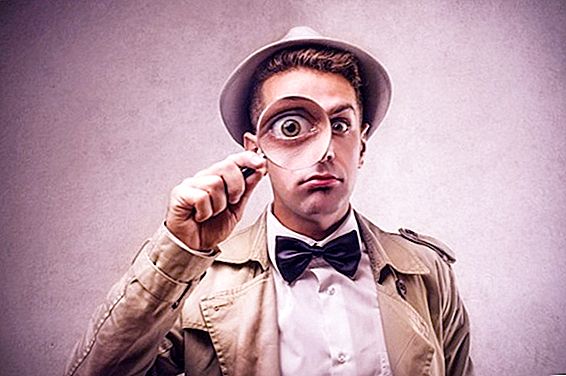Watching in the series and films the work of Sherlock Holmes or Detective Monk, you involuntarily become sad: "Well, how do they only manage to notice everything and solve everything? What about me?" But nothing. Mindfulness can be trained just like muscles. More effort is better.

You will need
Free time and desire
Instruction manual
one
Classes for the development of observation is better to start with a hearing training. Yes, not from sight, but from hearing. The fact is that with the eyes of a person perceives from ⅔ to ⅘ information about the world around him. And only the rest falls on the sense of smell, touch, taste and hearing. However, only hearing is the same “long-range” feeling as vision, so it’s easier to learn to segment perception from hearing.
2
Sit down, close your eyes and divide the audible world into several conventional zones: apartment (internal sounds), street (nearest external), district (farthest). Focus and switch your hearing around these areas. Teach yourself to hear sounds only within one zone. You should train until this switching begins to be given to you without difficulty, and remembering the sequence of what is happening within 5-10 minutes will be absolute. Experience shows that an unprepared person achieves similar results in about one and a half to two months of daily training.
3
Now you can start training your eyesight. It consists of two components. First you need to practice on inanimate objects, then on animated ones. After choosing an object or person, consider it from all possible sides for 1–5 minutes. Pay special attention to small details: scuffs, grease spots, highlights, wear and tear, articulation of parts, fine wrinkles, muscular development, skin and teeth color, etc. Try to notice something that the eye did not cling to before. The easiest way is to approach observation from the perspective of a critic, as if looking for defects or flaws in objects.
4
Remember: all objects are in some space for some time (which means they move, deteriorate), and also interact with each other (leave mutual traces, exchange particles of dirt, dust …). You will begin to detect traces of these interactions with each training session more quickly, and the connections between them will be tracked more efficiently.
5
The next stage is the training of observation itself: attention and logic. At this stage, any object that you choose to practice should be considered in the already known coordinate system: space (including lighting, position relative to other objects and interaction with them), time and components. The main mistake common to all novice fans of deduction is the setting of the investigation for the reasons: after all, I want to reveal some kind of “secret” right away, while subtle observation depends on the ability to notice simple but unobvious things and draw the only logical conclusions.
6
Since the principles are already known, you can go to the examples. Here is an office desk. From the way it stands, how hard the floor covering is pressed under it, from the tracks on that floor, changes in the color of the table polish, barely noticeable scuffs from the extendable chair, dust accumulations, loose joints of shelves, greasy ends, etc., we can draw conclusions how long the table serves its owner, where it stood until its present place, in what clothes they most often work for it, how often the owner and the owner look inside and tell something about his character (for example, if the table is almost new and scuffed from nomination there are a lot of removable and retractable stools).
7
Or, for example, there is a lamp on the table. It is unlikely that you used to look closely at the bends and fractures of its wire, and now, having examined them carefully, you can say with fairly high accuracy how often it was rearranged from place to place, and to guess why. In the wake of the heat next to the light source itself - the "owl" or "lark" its owner. By fresh and old dust or its absence - as far as he carefully monitors the order.
eight
And if you have the opportunity to talk with the owner of the table and lamp, pay attention to how he sits, stands, walks, says, looks, breathes, smiles, frowns, smokes, puts out a cigarette. Who is he - a misanthrope or a zinger, a pedant or a sloven, is he happy in family life, is he playing sports, is he looking to the future with optimism, or is he just dreaming of being alone and alone? Surely after training, you will learn a lot more about your vis-a-vis than he wants to show and tell, which is not bad for a beginner Holmes!
note
There are a number of diseases and painful conditions in which the development of observation acts as an adjuvant medicine: insults and micro-strokes, Alzheimer's disease, depression, a symptom complex called vegetative-vascular dystonia, and some diseases of the nervous system. Of course, before you begin classes, you should consult your doctor.
Useful advice
With the development of observation, especially at the very beginning of practical exercises, you should relax or switch your attention as often as possible. As you know, the best rest is a change of activity. For a "fresh eye" any, even the most familiar object will open from new sides.
Attention requires constant training. In public transport, you can memorize the faces, clothes and remarks of passengers, remembering the number of incoming and outgoing. During city walks - to peer into architectural details, tracking the interaction of buildings with modern infrastructure. In nature, to observe the traces of a person’s stay, and with due erudition, try yourself as a hunter-tracker.
